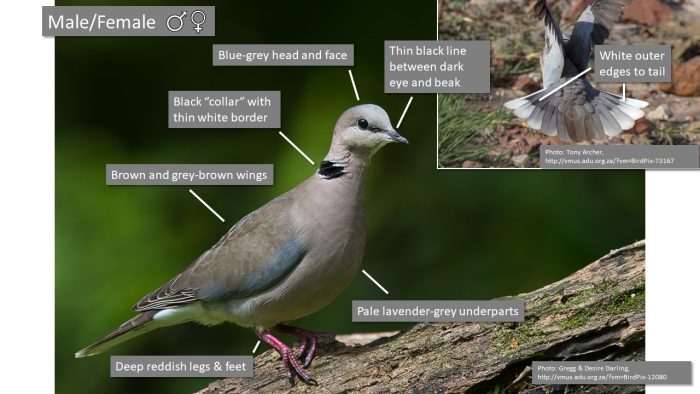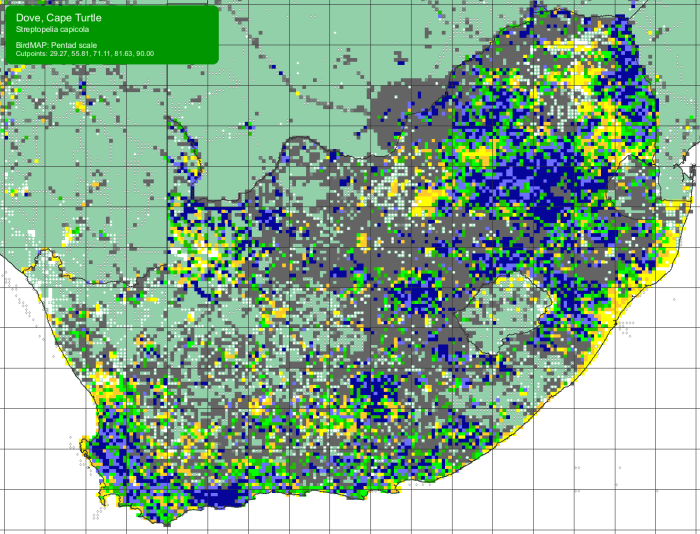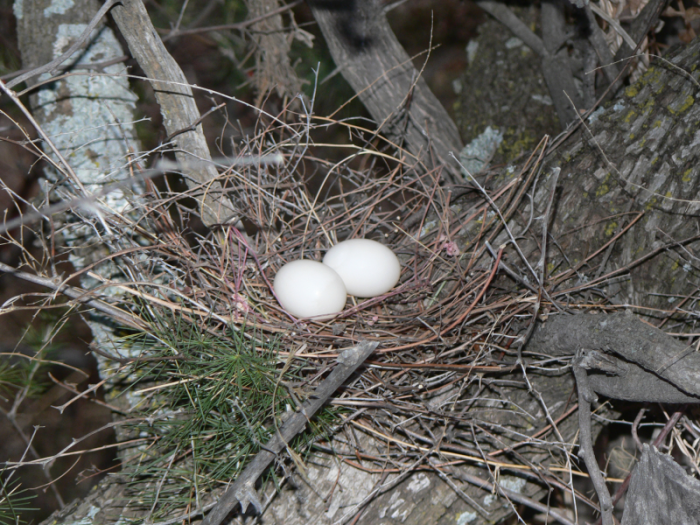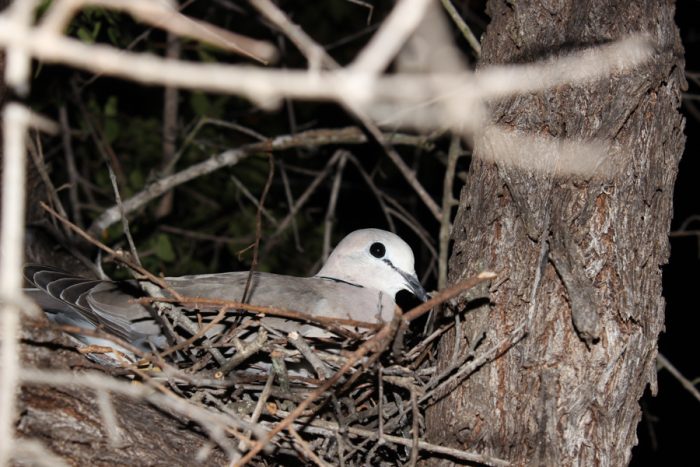Identification
The Ring-necked Dove, also known as the Cape Turtle Dove, is a very common bird species that occurs all over South Africa. It can be identified by its brownish-grey wings, lavender-grey underparts, the black half collar on the back of its neck, and its dark eyes with a thin dark stripe leading to its bill. In flight, its white outer tail feathers are also an easy identifier (the tail of the fairly similar Red-eyed Dove has a dark band with a pale edge). But, if in doubt, try to listen out for its call, a rhythmic, three-syllabled crooning. Some people put the call into words: “Tell Fa-ther” or Word Hard-er”, with the emphasis on the second syllable! Take a listen here. Males and females are alike.

Habitat
Ring-necked Doves occur almost everywhere in South Africa in a variety of habitats. They can be found in most types of woodland, farmland, suburban parks and gardens. They also often nest, roost, and forage in and around alien trees, such as Port Jackson Acacia saligna, Rooikrans Acacia cyclops, Pinus sp. and Eucalyptus sp.

Distribution
In continental Africa, the Ring-necked Dove occurs from Ethiopia south through Tanzania, southern DRC, Zambia, Angola, and all the way to southern Africa. It is one of the most prolific birds in southern Africa, occurring across the entire region in woodland, savanna, farmland, urban parks and gardens. The SABAP2 distribution map below confirms its widespread range across all sorts of habitats.

Behaviour
Ring-necked Doves are usually found alone or in pairs. However, they do form larger flocks–sometimes comprising hundreds of birds!–especially around sources of food and water. These doves roost in treetops at night and forage for food on the ground by day. Peak foraging times are early morning and late afternoon. They mainly eat seeds, supplemented with fruit, nectar, leaves and invertebrates. When walking, their heads bob back and forth with each little step.

During breeding, the female usually constructs the nest, taking about 3-8 days to build it. The nest is a small platform of twigs, grass, roots and sometimes pine needles, usually about 15 cm wide. It is typically placed in the fork of a tree, surrounded by dense foliage and often in suburban gardens or parks. Both parents incubate the eggs and take care of the chicks after hatching. The chicks are dependent on their parents for approximately 12 days after hatching.


Further Resources
Species text from the first Southern African Bird Atlas Project (SABAP1), 1997.
Virtual Museum (BirdPix > Search VM > By Scientific or Common Name).
More common names: Gewone Tortelduif (Afrikaans); Ihobe (Xhosa); iHophe, uSamdokwe (Zulu); Tourterelle du Cap (French); Kapturteltaube (German).
Recommended citation format: Daniel KA and Loftie-Eaton M 2022. Ring-necked Dove Streptopelia capicola. Bird Feeder Project. Biodiversity and Development Institute. Available Online at http://thebdi.org/2022/03/08/cape-turtle-dove-streptopelia-capicola/

